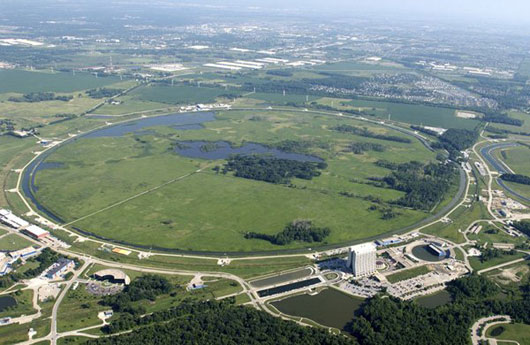Science News
Things That Go Bump
February 21, 2012

At a spirited press conference during last week’s AAAS meeting, physicists from different particle accelerators around the world spoke about recent and upcoming findings.
Rob Roser of Fermilab and Sergio Bertolucci of CERN engaged in a competitive and collaborative discussion, with smiles on their faces the entire time.
At the heart of the discussion… the Higgs boson. Does it exist or not, and either way, who will be the first to report it? CERN or Fermilab?
Roser promised results soon—hopefully at a conference next month in Italy, “if CERN and the Large Hadron Collider don’t steal our thunder.” He did mention that they achieved expected sensitivity with the final dataset—confirmed at 125 GeV (that’s billions of electron volts). Whether the Fermilab scientists saw the Higgs there or not remains to be seen, Roser said. (Reporters later accused him of being “coy.”)
Later this week, Fermilab will present the mass of the W boson, another particle physics hot topic. This measurement, Roser stated, should provide information on the mass of the Higgs, if it exists.
Bertolucci confirmed that 2012 will be the year we know whether the Higgs exists or not. A reporter asked which result would excite the CERN director more: Bertolucci replied that he would be more excited if it did NOT exist. “If the mechanism isn’t there, than another should be… There would for sure be new physics, and that discovery would be within our reach.”
Bertolucci then spoke about the CERN finding last year on neutrinos traveling faster than the speed of light in an OPERA experiment in Gran Sasso, Italy. “I have difficulty believing it because nothing arrives in time in Italy,” he quipped. As you may remember, this finding has CERN asking, nay, begging the physics community to disprove it. And they may get their wish.
CERN is changing a number of things at OPERA for retests beginning in May. Around the same time, Fermilab will also begin testing the speed of neutrinos in the United States, tracking the particles’ speeds on a journey from Chicago to northern Minnesota.
Finally, Lia Merminga, of the TRIUMF accelerator in Vancouver, spoke of the future of particle accelerators and how their use in research affects everyone, not just physicists. Her accelerator and others are studying particles to make inroads in nuclear waste clean-up, clean energy production, and even medicine.
In the next several months, we'll visit the Advanced Light Source, a local accelerator at Lawrence Berkeley National Laboratory, and shed light on the similar, real-world work they do. Stay tuned.